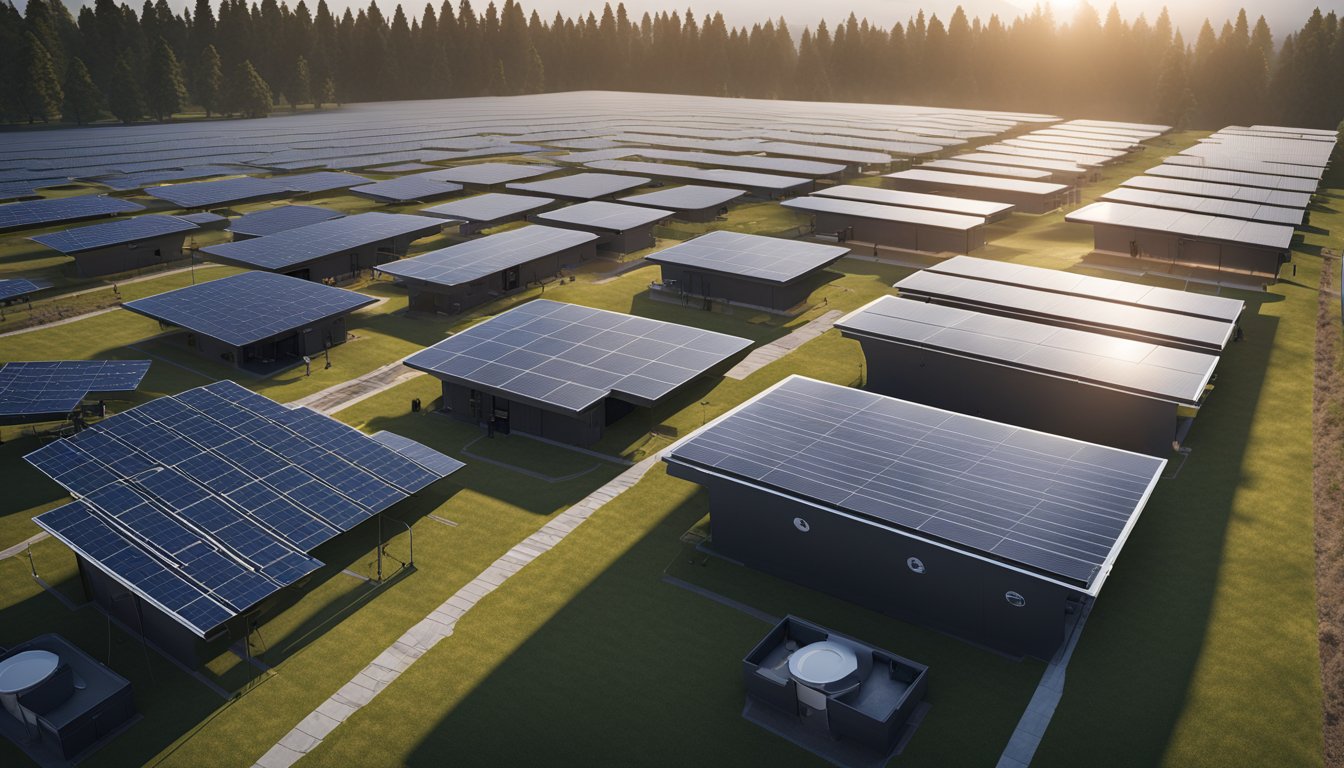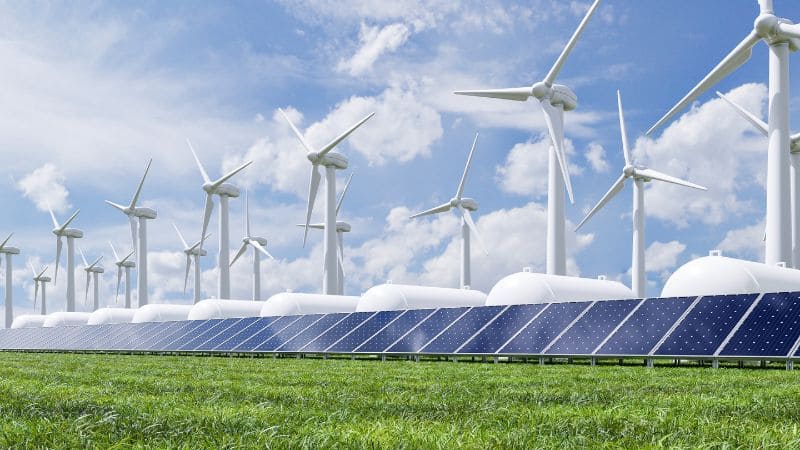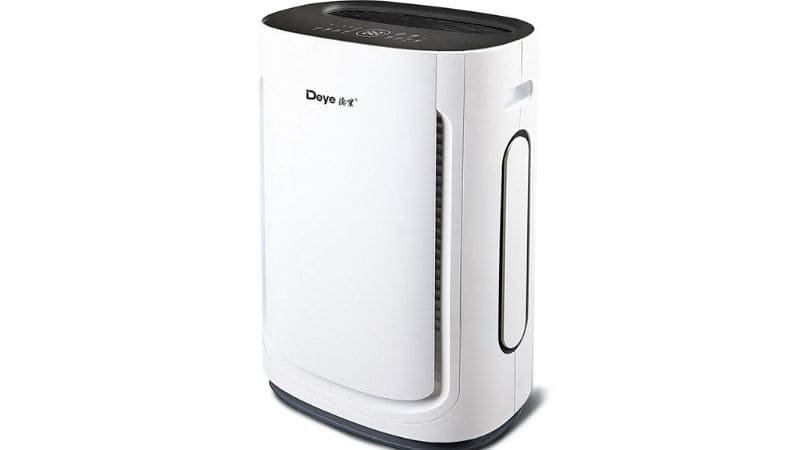With rising temperatures and energy costs, finding efficient and sustainable cooling methods is becoming increasingly important. Solar cooling presents an eco-friendly solution by harnessing power from the sun to provide air conditioning and refrigeration. Unlike conventional cooling systems that consume electricity often produced from fossil fuels, solar cooling utilizes renewable solar energy to drive thermally-activated cooling processes.
Solar cooling technology is evident in vehicles such as recreational vehicles and campers, where it is employed for refrigeration purposes. This system is also implemented in vapor absorption refrigeration systems. These are prevalent in industries necessitating very low process temperatures and substantial thermal capacities.
This article will explore the different techniques, systems, applications, and advantages of solar-powered cooling.
Types of Solar Cooling Systems

Solar cooling systems offer an environmentally friendly way to keep your spaces cool by harnessing the sun’s energy. Various solar cooling technologies cater to different needs and setups, each with unique mechanisms and benefits.
Solar Absorption Cooling
Solar absorption cooling utilizes a solar collector, such as a parabolic trough, to capture solar energy, which powers a thermodynamic cycle. This process generally involves a solution of water and lithium bromide, or another absorbent paired with a refrigerant. Absorption chillers are the centerpiece of this system, capitalizing on heat to generate cooling, making it an ideal match for sunny climates where cooling demand aligns with solar availability.
Solar Adsorption Cooling
Unlike absorption systems, solar adsorption cooling uses solid sorption materials like silica gel. They adsorb the refrigerant vapors—similar to how a sponge absorbs water. The adsorption process creates a cooling effect as the system cycles between adsorption and desorption phases, often driven by solar thermal energy. The efficiency of adsorption chillers can be particularly appealing for off-grid buildings where traditional electricity or diesel generators are less desirable.
Absorption cooling cycles include four key elements: a generator, a condenser, an evaporator, and an absorber.
Solar Desiccant Cooling
Solar desiccant cooling systems employ moisture-absorbing materials to reduce humidity and indirectly produce a cooling effect. By incorporating a heat exchanger and sometimes using a heat pump, the desiccant system first dries the air, making the subsequent cooling process more efficient and comfortable for occupants. It removes the moisture from the air through evaporative cooling. This type of cooling is effective in humid climates as it tackles humidity and temperature simultaneously.
Solar Thermoelectric Cooling
A more recent advancement in solar cooling is solar thermoelectric cooling, which converts thermal energy directly into electricity using the principles of the thermoelectric effect—often through the use of a Rankine cycle. These systems can be smaller and simpler than sorption chillers, making them attractive for compact applications where minimal maintenance or noise is crucial.
Remember to consider the climate, energy needs, and the structure of your building when selecting the most suitable solar cooling system.
System Components and Functionality

Solar Collectors
Solar collectors are the heart of your solar cooling system. They capture solar radiation and convert it into usable thermal energy. There are two main types:
- Flat-plate collectors: Ideal for residential use due to their simplicity and cost-effectiveness.
- Concentrating solar power (CSP) collectors: More suited for larger scale applications, these collectors use mirrors or lenses to concentrate sunlight onto a smaller area, generating higher temperatures.
Thermal Energy Storage
Your system’s thermal energy storage component is pivotal in maintaining a steady supply of cooling, even when the sun isn’t shining. This is often achieved through:
- Phase change materials (PCMs): These materials absorb and release thermal energy during the process of melting and solidifying at specific temperatures.
- Water tanks: Water can store a significant amount of heat and is commonly used due to its high specific heat capacity.
Cooling Tower and Heat Rejection
The final stage in your solar cooling process involves a cooling tower and heat rejection system. Key components here include:
- Absorber: This is where the thermal energy causes a refrigerant, often ammonia, to evaporate, absorbing heat and cooling the air.
- Condenser: After absorbing heat, the refrigerant vapor is condensed back into a liquid by rejecting heat to the environment.
- Dehumidification and regeneration: Processes that remove humidity from the air and regenerate the desiccant material, allowing for continuous operation.
Performance Metrics

When assessing the effectiveness of solar cooling systems, it’s essential to consider several key performance metrics. These indicators help you understand how efficiently your system operates and can influence both your energy consumption and cost.
- Efficiency: This measures how effectively your system converts sunlight into cooling power. A higher efficiency value means more cooling output from the same amount of sunlight.
- Coefficient of Performance (COP): COP is the ratio of the cooling provided to the electrical energy consumed. In simpler terms, it tells you how much bang you’re getting for your buck regarding electricity use. You’re aiming for a higher COP to get more cooling without an uptick in your electric bill.
- Electricity Consumption: Keeping an eye on this metric helps you monitor how much electric power your solar cooling system uses. It’s an excellent way to gauge your system’s impact on your energy bill and overall energy usage.
- Heat Exchange: The quality of your system’s heat exchange process can significantly affect performance. A more efficient heat exchange means less wasted energy and, consequently, less wasted money.
- Energy Consumption: This is a broader metric that encompasses all forms of energy used by your cooling system. By minimizing this, you ensure your system is as green as possible, cutting down on costs and helping the environment.
- Energy Cost: It’s not just about how much energy you use, but also what you pay for it. By measuring energy costs, you can get a clearer picture of your system’s financial performance.
Supporting Technologies and Innovations in Solar Cooling
In the ecosystem of solar cooling, your system’s efficiency and sustainability are greatly improved with the integration of innovative technologies and smart solutions.
Battery and Energy Storage Solutions
When you harness solar energy for cooling, having a robust battery and energy storage system is essential. This allows you to store excess solar power generated during peak sunshine hours. Your system can then utilize this stored energy later, especially when solar irradiance is low, maintaining continuous operation without resorting to the grid.
Smart Grid and Demand Response
Integrating your solar cooling system with a smart grid can significantly enhance performance. A smart grid connects you to an electricity network that smartly manages the flow of energy. If your system includes demand response capabilities, it can autonomously adjust its energy consumption based on grid conditions.
Building Automation Systems
Your solar cooling solution becomes significantly more efficient with the addition of building automation systems (BAS). These systems intelligently control various building components, which include:
- Compressors: Automated adjustments ensure that they operate efficiently, matching cooling output to your actual needs.
- Automation: Streamlines the operation of the entire solar cooling system, reducing manual oversight and optimizing performance.
System Optimization Techniques
When you’re looking to improve the performance of your solar cooling system, considering optimization techniques is essential. Optimization involves making strategic choices to enhance efficiency and maximize the output of the system. By focusing on performance improvement and system integration, you can unlock the full potential of your solar cooling.
Let’s zoom in on a few strategies:
- Central Composite Design (CCD): This approach helps you develop an optimal system configuration. It systematically varies component temperatures to find the ideal balance that yields the highest efficiency.
- Performance Simulation: Simulate your system with different component settings. Adjust the temperature of your generator, condenser, absorber, and evaporator to find the setup that provides you with the best performance. Remember, tweaking the generator temperature often significantly impacts the coefficient of performance (COP).
- Component Synchronization: Coordinating the operation of different components can lead to better integration and smoother performance. Ensure that your generator and absorber work in harmony for optimal results.
Remember, the goal is to enhance system integration and efficiency without compromising on the budget. Tailor these techniques to fit your constraints, and you’ll be well on your way to a solar cooling solution that not only cools effectively but also saves energy.
Advancements in Solar Cooling Technology

Advancements in solar cooling technology have made significant strides, benefiting your home’s energy efficiency and comfort. Solar photovoltaic (PV) panels, which convert sunlight into electricity, can operate at higher efficiencies when kept cool. Innovative cooling methods aim to keep these PV panels at an optimal temperature.
Recent Technologies:
- Fluid Medium Cooling: Utilizing fluids, such as water or air, to draw away excess heat.
- Nanofluids: Improved coolants thanks to nanoparticles that enhance heat transfer.
- Phase Change Materials (PCMs): Absorb and release thermal energy to maintain steady panel temperatures.
Solar-Powered Cooling Systems:
- Thermoelectric Coolers (TECs): Though limited by lower coefficients of performance (COP), TECs have improved through direct integration with PV systems.
- Photovoltaic-Thermal Systems (PVT): Combine solar PV with thermal systems to concurrently generate electricity and thermal energy for cooling.
In terms of technological advancement, the use of nanofluids as an optical filter has been researched for dual benefits — cooling and enhancing light absorption. The combination of nanofluids with nano-encapsulated PCMs has shown promising efficiency improvements.
Challenges and Limitations for Installing Solar Cooling
When you explore the realm of solar cooling, certain challenges and limitations become apparent. These can influence both the effectiveness and adoption rate of solar cooling systems.
Technical Challenges:
- Weather Dependence: Your system’s efficiency is intrinsically tied to solar availability, making it less reliable in overcast conditions.
- Upkeep: Regular maintenance is needed to ensure system efficiency, which can include cleaning solar collectors and servicing mechanical components.
Market Barriers:
- High Initial Costs: You may find that the upfront investment for solar cooling tech is significant, which can be a deterrent for some users.
- Knowledge Barrier: There’s a smaller pool of technicians skilled in solar cooling systems, which can pose a problem for installation and maintenance.
Practical Limitations:
- Space Requirements: You’ll need adequate space for the installation of solar collectors, which can be a constraint in urban settings.
- Efficiency Variations: The conversion rate of solar energy to cooling is not always consistent, which can challenge energy planning.
Integration with Building Systems

Small-scale solar heating and cooling systems are seeing rising demand, resulting in more installations for air conditioning systems in residential homes and small offices.
When considering solar cooling for your building, it’s essential to understand how it integrates with existing building systems. Proper design and regulation are critical for maximizing efficiency and maintaining comfort.
Building Design Considerations
When integrating solar cooling into your building, attention to the building envelope and insulation is crucial. The building envelope serves as the barrier between the interior and exterior environments and should support the effectiveness of your solar cooling system.
- Absorption Systems: These systems work well with solar thermal collectors, which are divided into two categories, namely passive solar thermal systems and active solar thermal systems, like flat plates or evacuated tubes, and should be designed to integrate seamlessly with your building’s architecture.
- Solar Thermal Systems: Stationary collectors such as flat plate collectors are commonly used and must be positioned for optimal sun exposure, which often involves strategic placement on roofs or facades.
Insulation plays a pivotal role in keeping the absorbed heat from escaping, making it a companion in the effectiveness of solar cooling technologies.
Regulation and Control Systems
A well-engineered regulation and control system is paramount to get the best performance out of your solar cooling installation.
- Temperature Regulation: You will need a system that can adjust and maintain the desired indoor temperature by regulating the flow rate and the cooling power according to the solar radiation available during different times of the day.
- System Integration: The solar cooling system should work in tandem with other building management systems to optimize performance and energy consumption, ensuring that you get the most out of your investment.
Maintenance and Longevity Considerations
Proper maintenance of your solar cooling system is pivotal to ensuring its durability and reliability. By taking the right care measures, you can extend the system’s lifetime and enjoy efficient cooling without hiccups. Here’s what you should keep in mind:
- Routine Checks: Regularly inspect your solar panels and thermal collectors for any dust or debris. Clean these components as needed to maintain optimal performance.
- System Health: Ensure the coolant levels are adequate and that there are no leaks in the system. Scheduled professional check-ups can help detect potential issues early on.
- Part Replacements: Components like pumps and fans play a crucial role and might wear out over time. Keep an eye on them and replace as necessary.
By staying on top of these tasks, you’ll maintain a solar cooling system that’s as reliable on the hottest day as it was when first installed. Remember, consistent care not only safeguards but enhances the system’s lifetime.
Guidelines for Consumers
When considering solar cooling for your home, navigating the market can be much smoother with the right guidance. Here are user-friendly tips and a mini buyer’s guide to help you make informed decisions and maximize energy savings:
1. Assess Your Needs
- Evaluate your space: Consider the size and orientation of the area you wish to cool.
- Understand the climate: Solar cooling efficiency can vary depending on your local weather patterns.
2. Cost and Savings
- Investigate tax credits, which can cover a significant portion of the initial cost.
- Calculate potential energy savings over time to understand the financial benefits.
3. Energy Efficiency
- Choose systems with high SEER (Seasonal Energy Efficiency Ratio) ratings.
- Consider pairing with other energy-saving features like programmable thermostats.
4. Installation and Maintenance
- Select certified installers: Proper installation is crucial for system efficiency.
- Plan for maintenance: Regular checks will keep your system running smoothly.
Remember, always review consumer protection resources and guidelines specific to your region to safeguard your investment.
In conclusion, solar cooling technologies offer a sustainable path to eco-friendly temperature control that taps into clean, renewable energy rather than fossil fuel-powered grid electricity. Solar cooling systems utilize solar thermal collectors or photovoltaic panels to harness heat or electricity from sunlight to drive thermally-activated chilling processes. Though solar cooling requires a higher upfront investment, it provides environmental savings and long-term economic benefits from drastically reduced energy bills.
As solar collector efficiencies improve and costs keep declining, solar cooling is poised to play an expanding role in sustainable heating and cooling for both buildings and industrial facilities. By reducing reliance on conventional air conditioners and refrigerators that emit greenhouse gases, solar cooling can significantly lower the carbon footprint of cooling demands across residential, commercial, and industrial sectors.
With the pressing need to combat climate change through clean energy transitions, solar cooling promises to emerge as an optimal eco-friendly solution for temperature control going forward.





